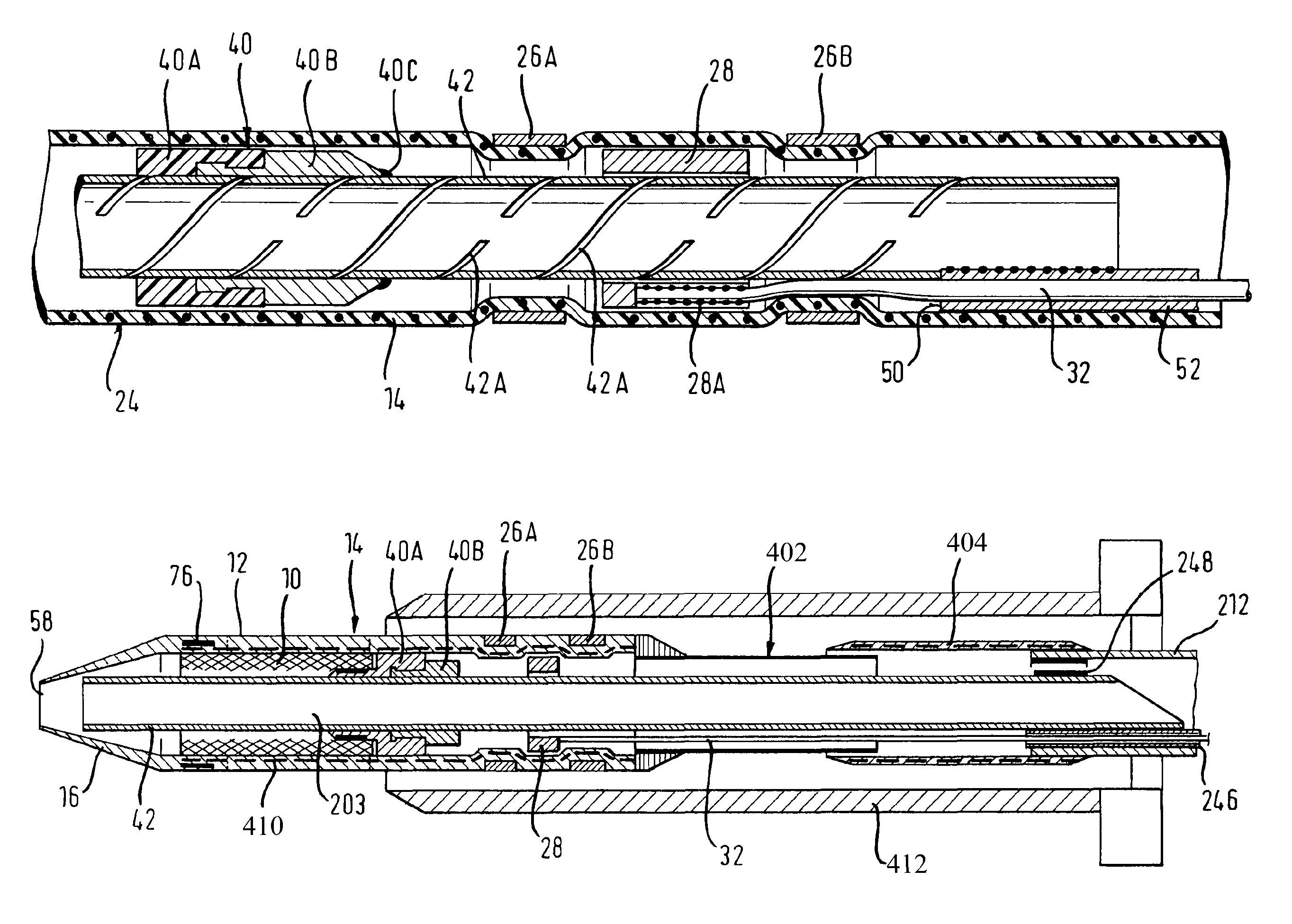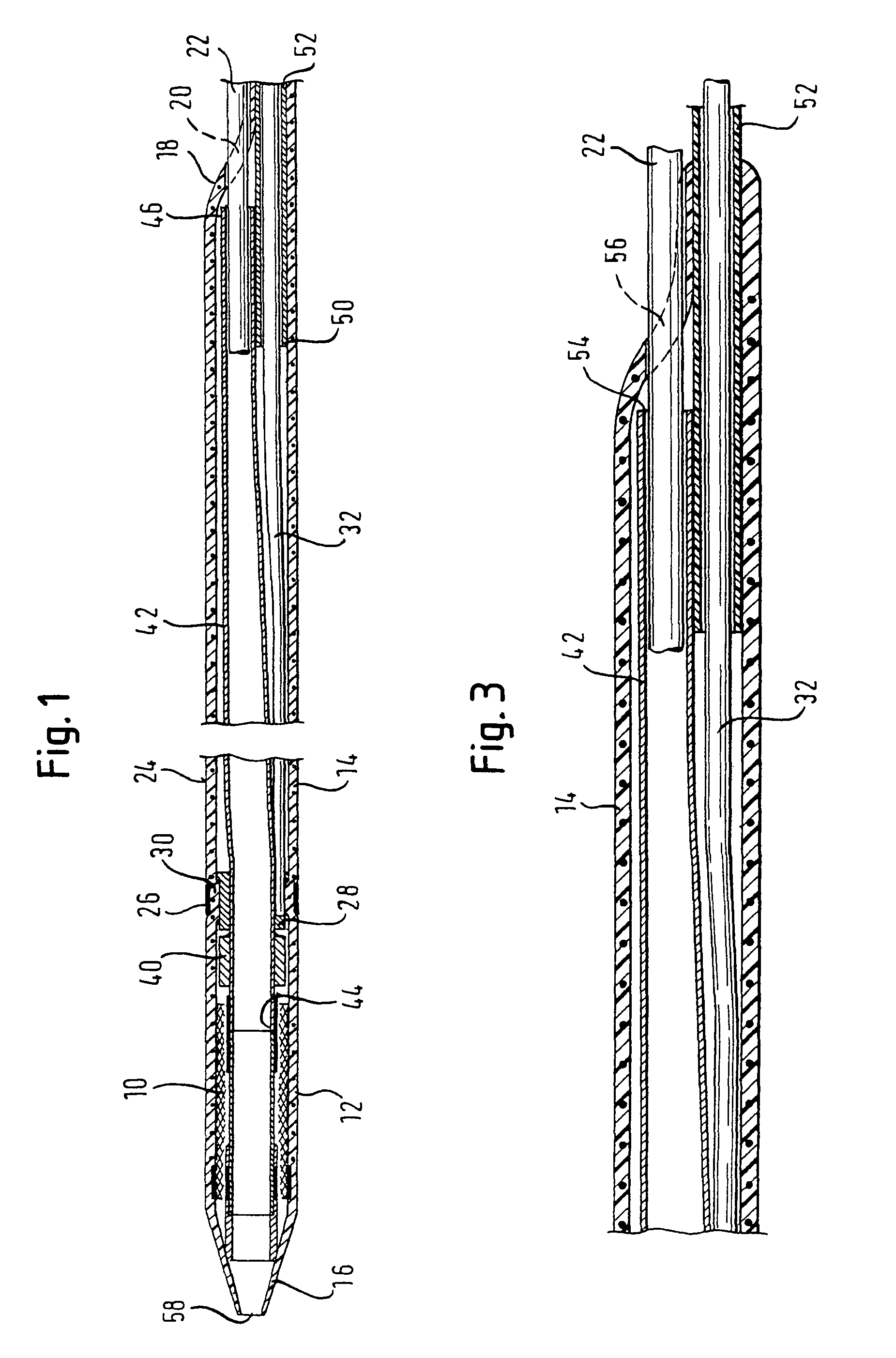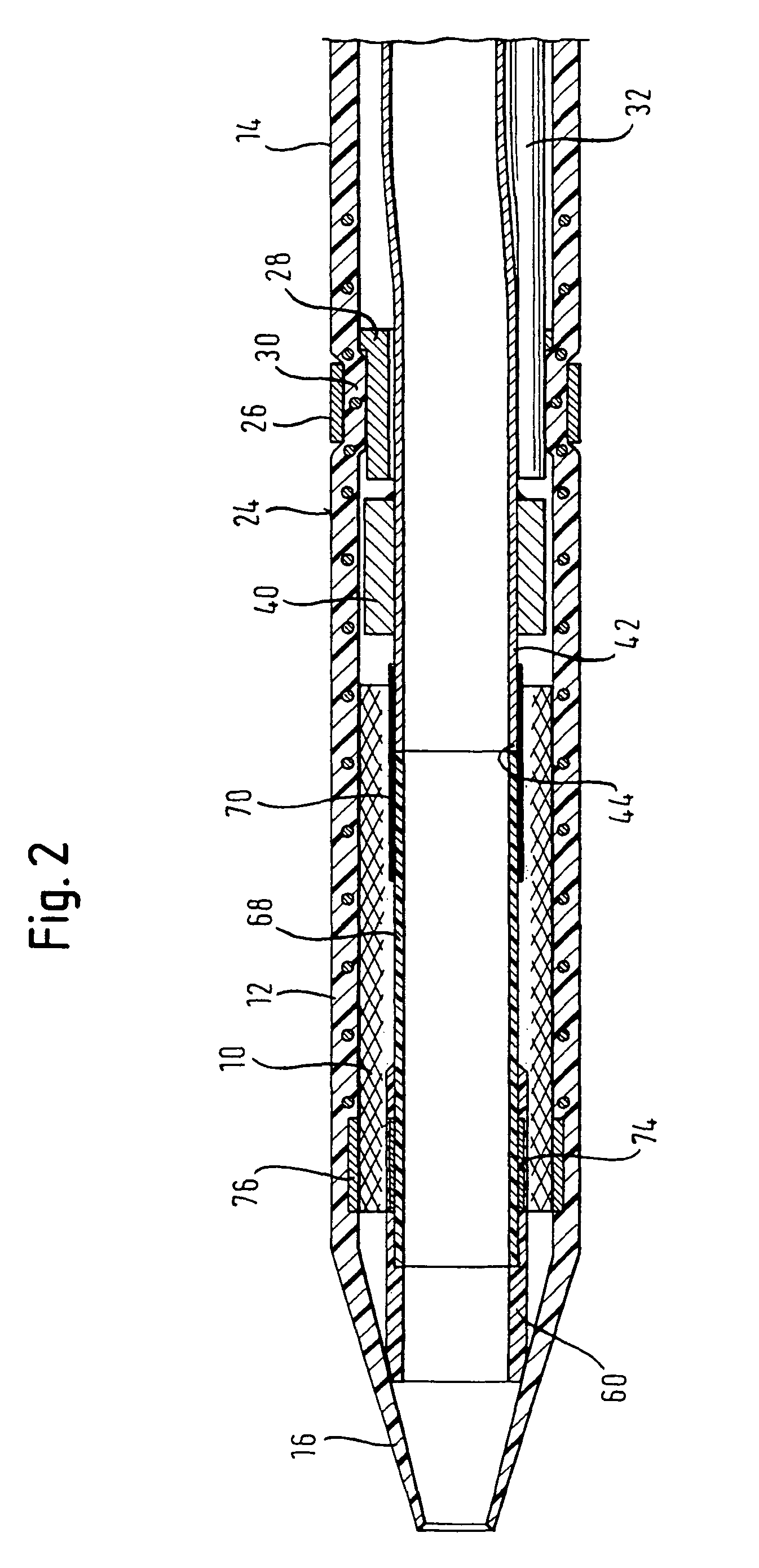Catheter device
a catheter and catheter technology, applied in the field of catheter devices, can solve the problems of stent release, failure of the device, patient risk, in use, etc., and achieve the effects of convenient bending, convenient atraumatic withdrawal of the catheter system, and simplified bonding task
- Summary
- Abstract
- Description
- Claims
- Application Information
AI Technical Summary
Benefits of technology
Problems solved by technology
Method used
Image
Examples
Embodiment Construction
[0049]Referring to FIGS. 1, 2 and 3 which form part of the invention described in WO-A-2005 / 053574, a self-expanding stent 10, or stent graft, lies inside the distal end zone 12 of a sheath 14 with a tapered distal tip 16 and a heat-formed proximal end 18 which defines the orifice 20 of a proximal guidewire exit port for a guidewire 22. Being a self-expander, the stent 10 is, at least at body temperature, putting compressive stress on the luminal surface of the sleeve 14 in the distal end zone 12. Proximal of the stent 10, and on the abluminal surface 24 of the sleeve 14, is a swaged marker band 26 of radiopaque metallic material, which is pressing radially inwardly the material of the sheath 14 within the band 26. Radially inside the sheath at this point is a stepped metal annulus 28 which is itself put under radially inwardly compressive stress by the material 30 of the sheath 14 inside the marker band 26. Thus, the sheath material 30 is compressed between metal bands inside (28) ...
PUM
 Login to View More
Login to View More Abstract
Description
Claims
Application Information
 Login to View More
Login to View More - R&D
- Intellectual Property
- Life Sciences
- Materials
- Tech Scout
- Unparalleled Data Quality
- Higher Quality Content
- 60% Fewer Hallucinations
Browse by: Latest US Patents, China's latest patents, Technical Efficacy Thesaurus, Application Domain, Technology Topic, Popular Technical Reports.
© 2025 PatSnap. All rights reserved.Legal|Privacy policy|Modern Slavery Act Transparency Statement|Sitemap|About US| Contact US: help@patsnap.com



